Cisco CEO Robbins Talks Nutanix, InterCloud, Open Compute Project And The Biggest Partner Summit Takeaways
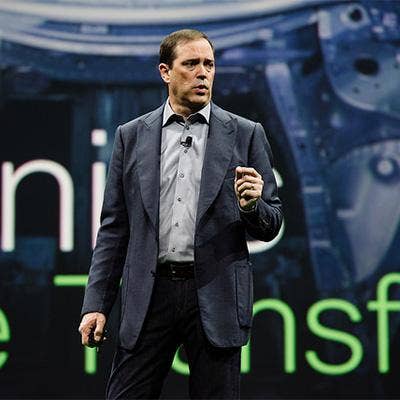
Robbins On The Record
Cisco CEO Chuck Robbins fielded questions from reporters Tuesday during the 2016 Cisco Partner Summit on the company's entrance into the hyper-converged infrastructure market, the status of its InterCloud cloud computing strategy and the biggest partner takeaways from the event.
This week at the event in San Diego, the networking giant unveiled a number of new products and services, a revamp of its partner strategy and a pair of acquisitions that had channel partners buzzing.
During the Q&A session, Robbins sounded off on hyper-convergence rival Nutanix, why Cisco's InterCloud strategy is still solid, Cisco's evolvement in the Open Compute Project, the channel takeaway from Partner Summit and the difference between himself and former CEO John Chambers.
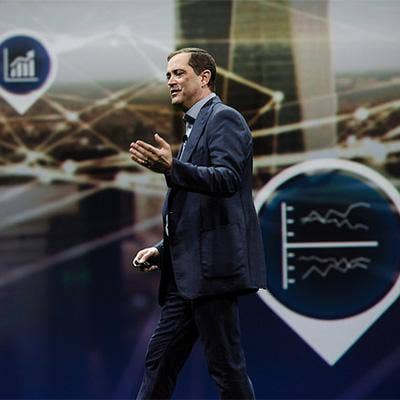
In regards to your entrance in the hyper-converged market, Nutanix said Cisco has a history of false starts entering new markets. How do you respond to that?
I saw the article that was written and I saw the comment from Nutanix … Someone from Nutanix said that Cisco doesn't have a track record of being very successful when they enter new markets. I'm just not sure, but I remember back when we were going to get into UCS in the server business. It reminded me of someone at [Hewlett-Packard] who said, "The difference is from a year from now, Cisco will be out of the server business, and we will have gained tremendous market share in networking."
It feels like to me at my 18 years at Cisco, we've been relatively successful entering new markets. I just want to make that comment.
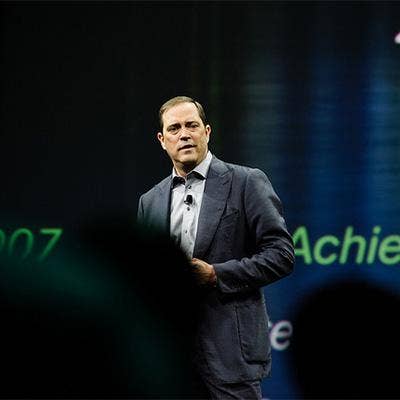
You're coming out with the hyper-convergence product, but it's in partnership with a relatively unknown company, SpringPath. Can you address the criticism that you are doing this with an unknown and not with a company like Nutanix or SimpliVity?
We actually looked at all our options in this market and when we had our teams that understand the data center incredibly well actually take the time to understand the technology that SpingPath had created, we felt like it was next-generation thinking.
So we then put together a solution that we took to about less than 10 customers with the ACI piece on top of it, so that we could test it with customers to see, "What's your response?" Then we actually had many partners who understood this landscape even better than we do come to San Jose to look at the offer and give us their feedback. So we pressure tested this for three months, which is why many of you wrote about it long before we announced it, because we were out active with our customers. We were active with partners. We were having this discussion and these are people who understand the other offers incredibly well.
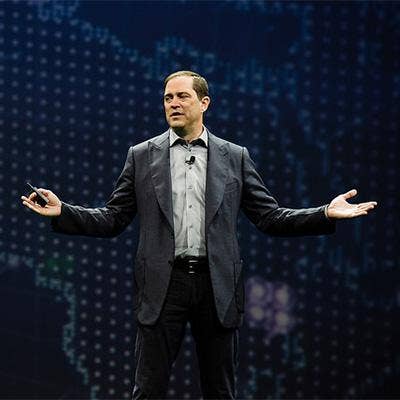
What was the feedback from partners?
The feedback I got was, 'Wow. You guys are on to something.' So that's the reason we decided to go [with SpringPath]. One of the things that is a significant differentiator for us as we enter this market is [our channel partners], because to scale this capability globally requires a significant investment and requires a massive ecosystem of partners out there that work with us every day. So we think that gives us a significant advantage as we look to the future as well.
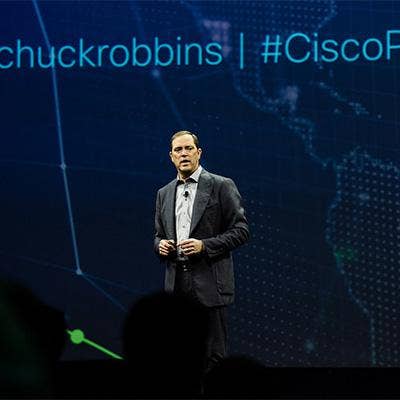
Which parts of your new offerings are organic versus acquired?
We announced internal innovation with the new ASIC-based data center switching that give you tremendous performance, in-line analytics, in-line security as well as millions more IP address capacity and just performance levels at prices that are very attractive to our customers – that's internal innovation. The acquisition piece was clearly CliQr acquisition. The partnering piece was the HyperFlex which is a combination of some of our own internal innovation, i.e. UCS, with some of SpringPath's software assets on top of that. So that was an example of us leveraging a partnership to make that happen. Those are three examples of how we look at innovation.
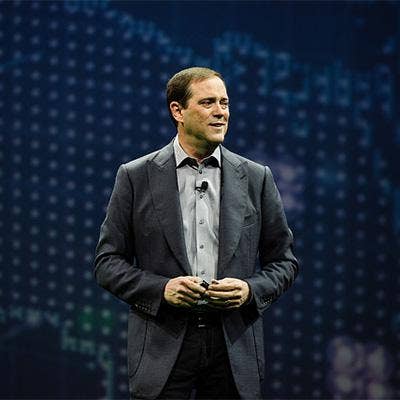
You haven't been talking about InterCloud lately. Is that still a viable initiative from Cisco and if so can you update us on its status? (Part 1)
There were three fundamental pillars of InterCloud. The first, is we were going to build an architecture we would position with our service provider customers, which would be the foundation for them delivering cloud services to their customers.
The first is very much on track. We work very deeply with our service providers around the world. In many cases, given what they're trying to accomplish and given data sovereignty issues, we are actually taking our offers and creating instances that are running on the infrastructure stack that we talked about with Intercloud to deliver WebEx, Spark, maybe some of our security portfolio that we're talking about right now, as well as our virtual managed services that we built with NFV. That's moving forward as we had expected.
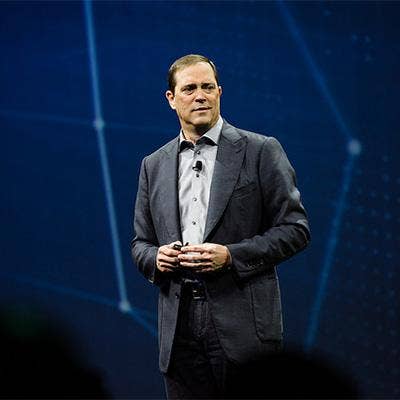
You haven't been talking about InterCloud lately. Is that still a viable initiative from Cisco and if so can you update us on its status? (Part 2)
The second is we were going to build all of our offers in the future to look at everything as-a-Service, and we were going to build that on a standardized infrastructure that was very consistent with what we were talking about with the service providers.
So for the second, we have built internally the infrastructure upon which all of our future as-a-Service offers will be running. Different business units inside Cisco are at different phases of getting their applications written to that. That's probably taken a little longer than I hoped, but it's going forward at a good pace.
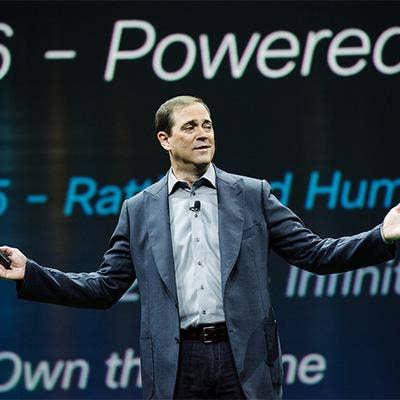
You haven't been talking about InterCloud lately. Is that still a viable initiative from Cisco and if so can you update us on its status? (Part 3)
The third was we wanted to help our customers move workloads into public clouds with security and policy from the private capabilities. It was about workload mobility.
We built Intercloud Fabric, which had some ability to allow customers to extend their private infrastructure into the cloud, it was more of a VPN tunneling capability that we had there. And CliQr was really the up-the-stack capability that allows that third piece of the vision, which is the true policy provisioning security from the private enterprise moving into the public cloud, if that’s what you like to do.
So while you haven't heard me say, "InterCloud, InterCloud, InterCloud," you also haven’t heard me say "IoE [Internet of Everything,] IoE, IoE," the underlying strategies in my view haven’t fundamentally changed.
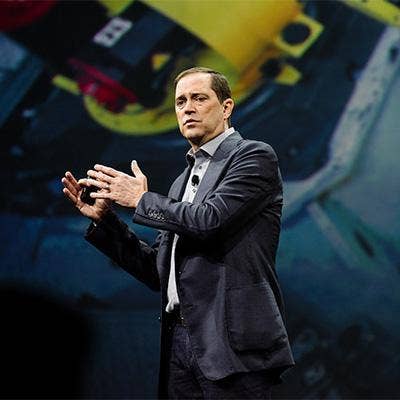
Does CliQr replace Intercloud Fabric?
I would think it's complementary.
There's probably a reason for both. There are customer use cases where one would make sense, but CliQr is a much more robust up-the-stack solution, where Intercloud Fabric was just an early way to give our customers some of that ability.
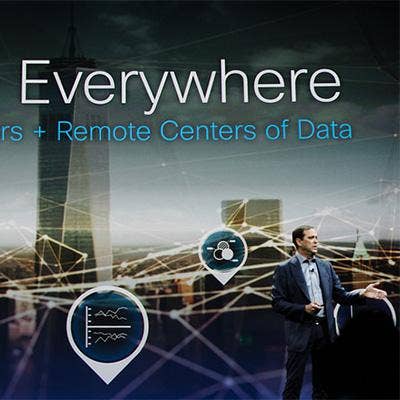
Are you hearing about Facebook's Open Compute Project (OCP) in the market or is that the media driving a conversation that isn’t even happening?
On the OCP front, we're a member. My view is quite simple. We need to be a part of every technology discussion that our customers want to have. We need to understand where it is they want to go, how they want the technology to evolve and we need to provide solutions that meet the needs of what they're looking for.
So in the case of the web-scale provider we [were working with on] the co-development side, I'd look at OCP the same way. They said, "We don’t have fundamental issue with [not wanting to use] Cisco … It's not about CapEx for us. It's about operation efficiency and OpEx … your off-the-shelf portfolio doesn't meet what we're looking for. So if you're willing to sit down and talk about it, then we'll work on it." So we built a product based on merchant silicon with very unique software capabilities on top of that, that met their needs and they're very pleased with it … and many other customers are interested in it. So I look at OCP the same way. We'll stay close to it and we'll do what we need to do relative to what our customers need from us.
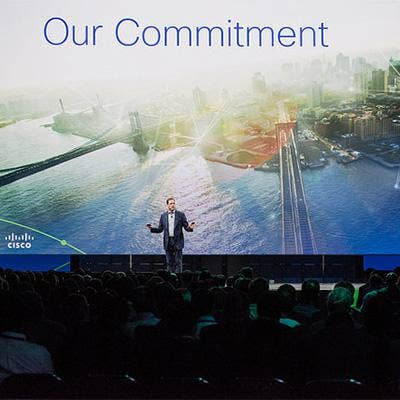
Does Cisco have any plans to offer NX-OS on OCP hardware? Has there been any demand for that?
Not really. We haven't seen a lot of demand for it.
I believe that customers infrastructure over the next decade will be a combination of, "I need some level of capability in software with some level of performance in hardware at this end. And then at this end, I need very integrated, high performance, feature rich software, doing analytics and deep packet inspection and security running on high performance ASIC" -- like what we announced today. I think our portfolio needs to address all of that over time. We're not going to have any religion around it. Whatever our customers need us to do, we will deliver on that.
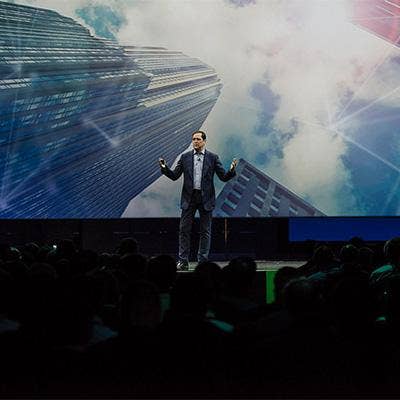
What are the new things you brought to Cisco that John hasn't done in his tenure?
I've rapped. I've danced on the stage in the middle of the GasLight district [in downtown San Diego]. (laughter)
Most of what we've done has been an evolution of the strategy we've been building over time. I am trying to get us to move faster than we have in the past. I am probably deeper in the technology in what it does for us in thinking about our portfolio and those sorts of things [compared to John].
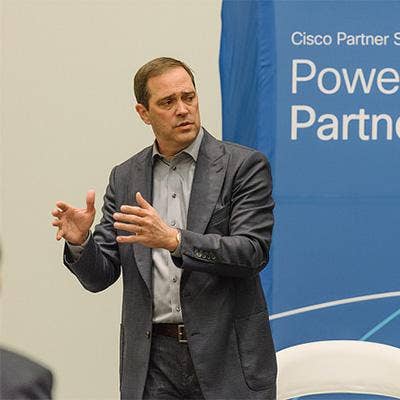
What is Chambers doing for Cisco now?
The great news is that John is still out doing many of the things that he loves for Cisco. I can tell you in the last three weeks he was in India, he was in Japan. This week he's speaking at an event in Santa Monica. He and I are meeting this Friday to catch up on how things are going. We've continued the strategy and my focus is, "How do we accelerate it. How do we get more balls in the air and how do we focus on execution in this world that's moving faster than it ever has before."
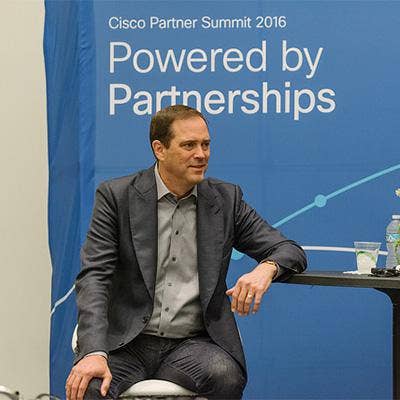
You mentioned on stage at Partner Summit that today's CEOs are now these paranoid creatures looking to see who's in the garage down the street coming after them. How are you managing that fear yourself?
We're going to move fast, fast, fast, fast. (laughter)
We have the advantage of having built our company in Silicon Valley where we know what is going on and understand what is possible. We’ve always operated in this mode of knowing that there are companies out there who are attempting to disrupt what we've been doing for 30 years and we assume they will continue to be there.
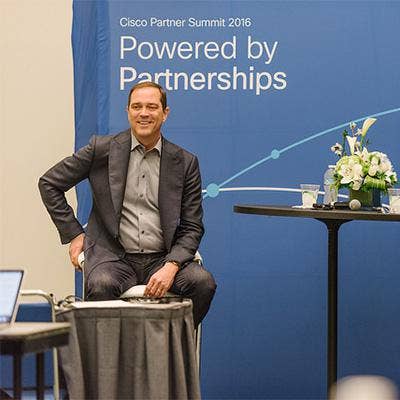
What's Cisco's challenge here?
Our challenge and our opportunity is for us do what we did today, which is to leverage our capabilities in internal innovation, with our acquisition capabilities, and our partnering capabilities and I think three of those give us a very unique, competitive advantage, but it also requires us to move fast, listen to customers, have no technology religion, meet the needs of what customers are asking for, never be defensive and try to accelerate how the technology helps our customers achieve their real business priorities. If we stay focused on that and don’t get distracted by some technology that's got a lot of buzz and excited about it, because that's when companies get in trouble.
Cloud is not what customers want. The benefits of what they're gaining from cloud is what they want. No one ever wanted (software-defined networking), they wanted automation, simplicity, operational efficiently, lower cost of running their infrastructure and you have to stay focused on those things and work hard to help the customers achieve those things. If you chase a technology because somebody said "That's the hot new technology," I think you get in trouble.
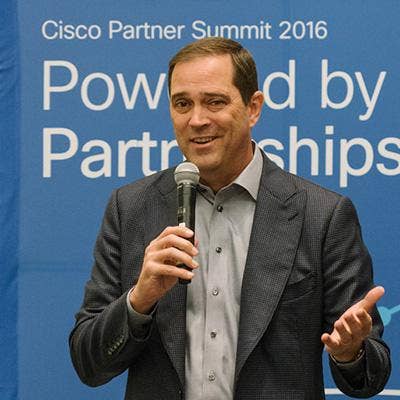
What's the most important message you think Cisco partners should take away from Partner Summit?
The most important takeaways to our partners, is number one: we have a tremendous commitment to innovation. We have a tremendous commitment for our partners and that will not change.
We believe that over the past couple of decades, we have built an ecosystem of partnerships and trust that has been beneficial for everyone in the room and all the partners around the world as well as for us -- and we don’t take that lightly. What (partners) will see from us as we move forward is faster innovation, more solutions that they can present to their customers and our commitment to building out and helping accelerate this (Internet of Things) and digitization move that will create tremendous opportunity for our partners as we look forward.